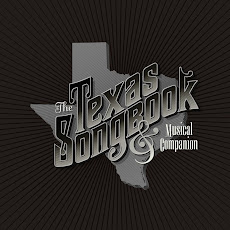May 4, 2013
The first weekend of May, we went camping at Fort Parker State Park near Mexia. The park is along Fort Parker Lake which is fed by the Navasota river. It is a small but beautiful park, named after Fort Parker, which was built in 1834 by John Parker, while Texas was still part of Mexico. In 1836, Comanche Indians raided the fort while the gate was open, killed several of the inhabitants and took several of the children with them, including Cynthia Ann Parker. She adapted to the Comanche lifestyle, married Chief Nocona and was the mother of Quannah Parker, the last great Comanche Chief.
Old Fort Parker, in a reconstructed form, is located just outside the state park on another start park road less than half a mile from the state park entrance. Here is looking into the fort from a gun window up in the corner blockhouse.
How interesting it is to find out that near the site of some of the oldest Texas history are several significant sites in Texas music history, along about a 30 mile stretch of Texas highway 14. Beginning at Kosse, birthplace of Bob Wills (and Marlin, hometown of Blind Willie Johnson is about 15 miles east of Kosse on Texas highway 7), then traveling north to Mexia, home town of country music hall of fame songwriter, Cindy Walker, then north to Wortham, hometown of King of the country blues, Blind Lemon Jefferson, then joining US 287 up to Corsicanna, home town of country music hall of fame singer Lefty Frizzell, this is one of the most densely packed stretches of Texas music heritage anywhere.
Just north of Wortham is a marker with an arrow pointing to the west side of the highway indicating that Blind Lemon Jefferson is buried there. Sure enough, if you drive in, at the end of the grave yard is his grave site. His headstone is inscribed with a line from his famous song:
"Lord, it's one kind favor I ask of You
See that my grave is kept clean"
The site is very clean and well maintained since the marker was place there in 1997, so it seems his request is being honored.
Probably no one influenced Texas blues more than Blind Lemon Jefferson. As Deep Ellum developed a reputation as a hub of the blues and jazz scene in Dallas, Blind Lemon Jefferson was the leading blues figure there. From about 1912, he and Leadbelly (Huddie Ledbetter) were frequent musical partners. T-Bone Walker began his musical career as a Blind Lemon Jefferson protege. Walker, from Oak Cliff, claimed that he used to guide Jefferson around the streets of Dallas in his early days in the 1920s. As a youth, Lightning Hopkins saw Jefferson perform and was influenced to develop his blues playing style.
Down the road in Mexia, Cindy Walker is buried in the city cemetery. Her grave site has an attractive granite guitar, making it easy to spot.
Cindy Walker's songwriting launched in 1940, when at 22, on a trip to Hollywood, she walked into the Bing Crosby building on a cold call to demo a song she had written for Crosby, "Lone Star Trail," and, improbably, he actually listened to it the next day at Paramount Studios where he was shooting a movie, he liked it, recorded it, and it became her first of many hits. She is best known for a string of hit songs she wrote for Bob Wills and his Texas Playboys, like "Miss Molly," "Cherokee Maiden," "Bubbles in my Beer," and many other that I had heard just the previous week in Turkey at Bob Wills Day. Many other artists had hits with her songs, including Ernest Tubb with "Warm Red Wine," Roy Orbison with "Dream Baby" and Ray Charles with "You Don't Know Me."
Going back north up the highway to Corsicana, there is a place called Pioneer Village, consisting of buildings restored and preserved in their original conditions from the 1850s through 1880s. Also in Pioneer Village is the Lefty Frizzell musuem, full of memorabilia from the life and music of Lefty Frizzell, and some memorabilia of other musicians of his time, which musically speaking was 1950 till his death in 1975.
Just down the street from the Lefty Frizzell museum is a park with a Lefty Frizzell memorial. Merle Haggard attended and spoke at the grand opening of the museum and memorial. Haggard felt a debt of gratitude to Frizzell for having given him his start in his musical career. Frizzell invited Haggard up to share the stage with him when Haggard was just 15 years old. A circle is nicely completed here connecting back to the Bob Wills Day the previous week. When Merle Haggard was at the peak of his career, he did a Bob Wills tribute album, "A Tribute to the Best Damn Fiddle Player in the World" in 1968, when Wills career and western swing in general had been in decline and nearly forgotten since the early 1950s. This was the start of the western swing revival and led to Bob Wills grammy winning last album "For the Last Time" in 1973.







































